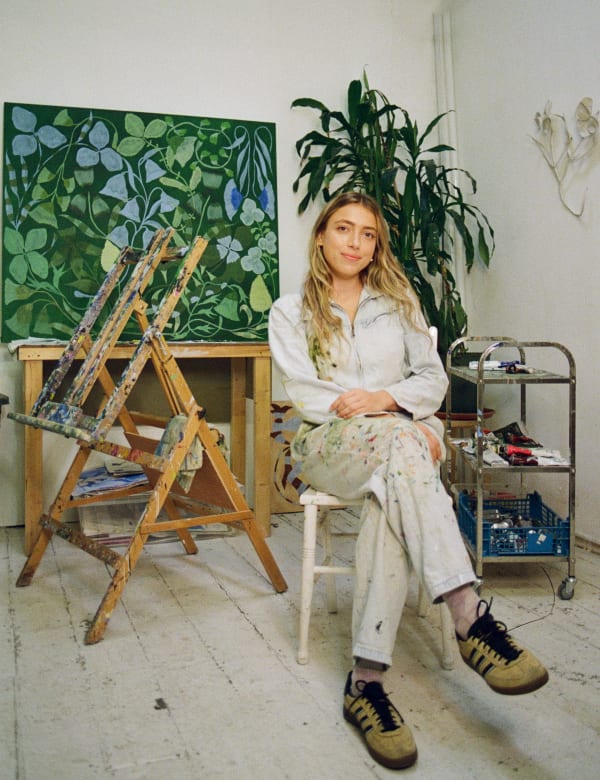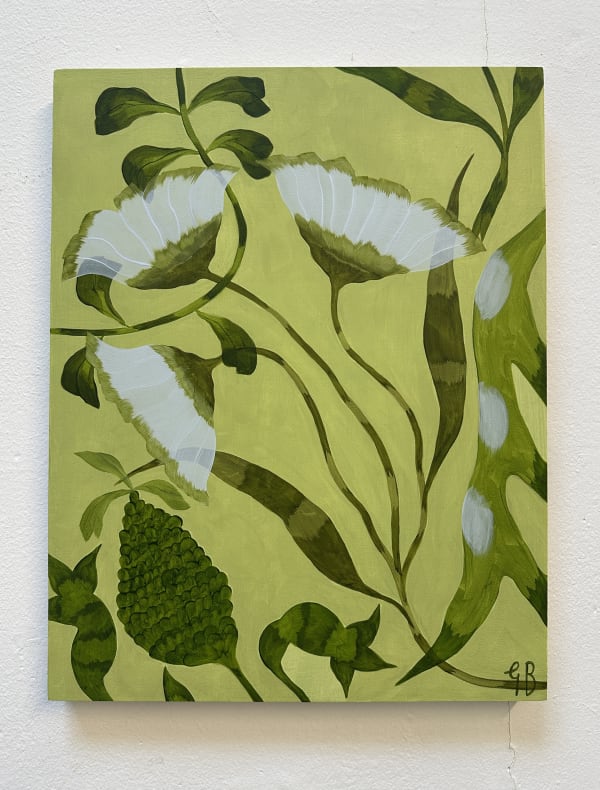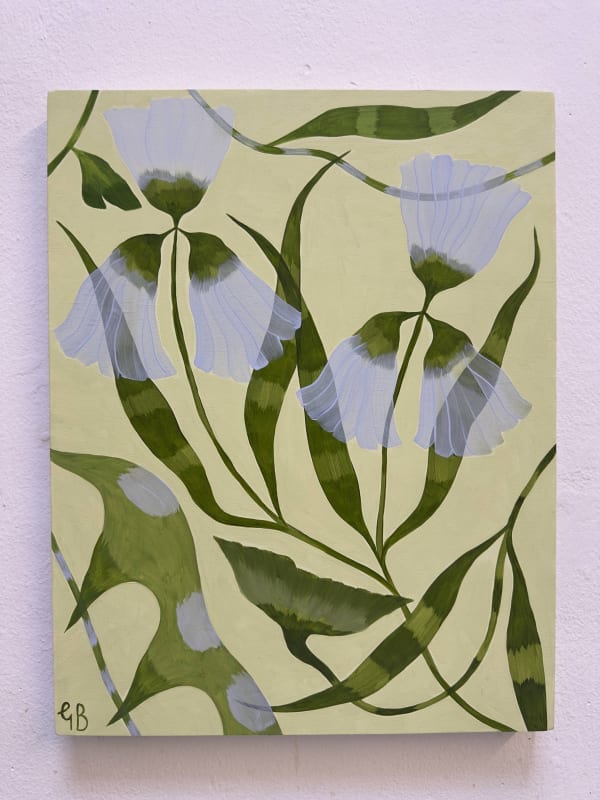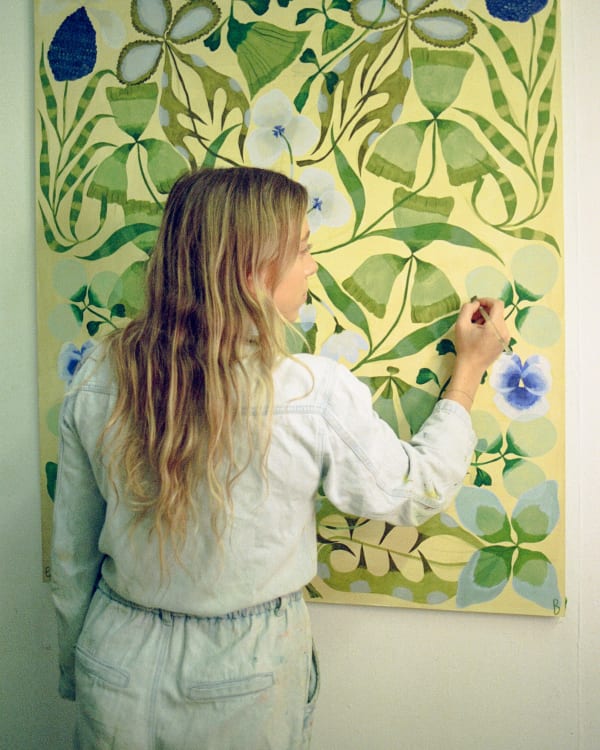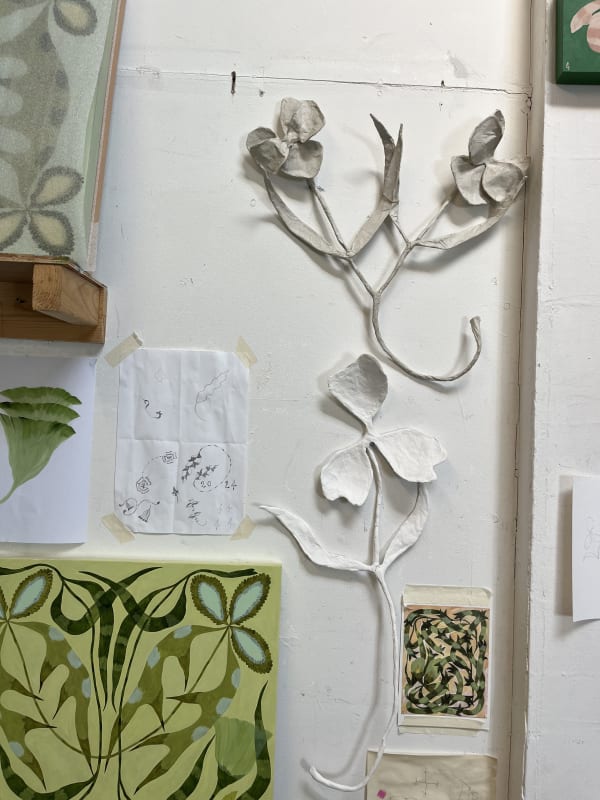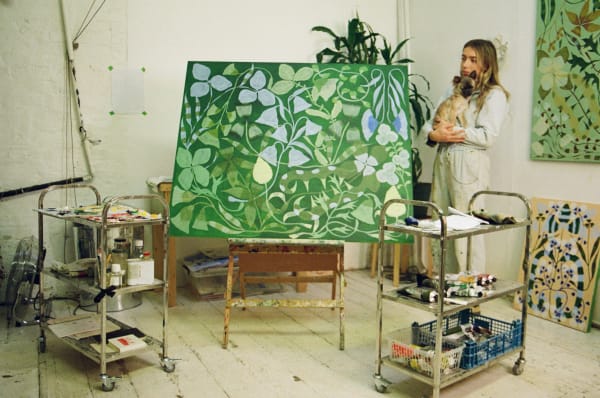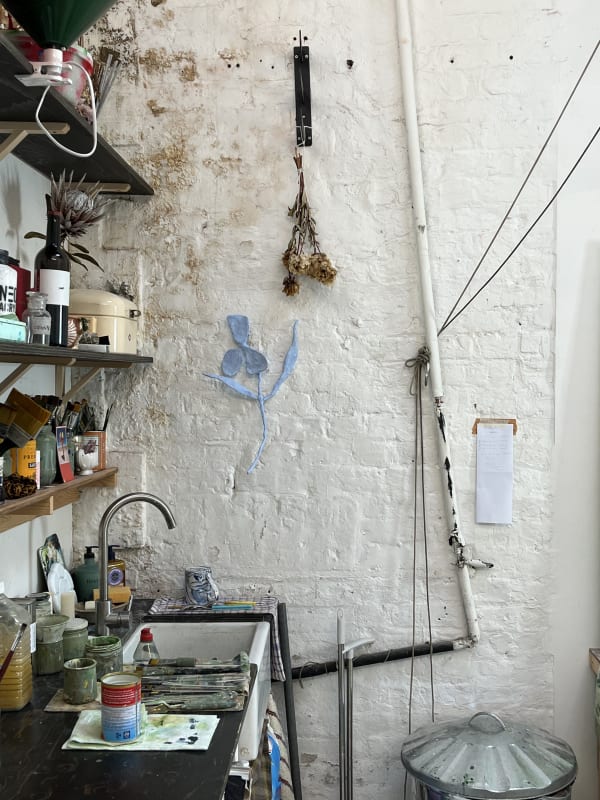My paintings have moved closer to a self-generative language; the forms emerge and the stems link up in sigil-like formations, assuming a cursive quality in places...
– Georgia Beaumont, 2025
EASTWOOD FINE ART: There is a sense of a dreamlike psyche, or even spirituality, in your canvases. Could you tell us more about the themes your work explores?
GEORGIA BEAUMONT: I’m coming to understand the psychic realm of my work more deeply over time. It’s a great privilege to make art and feel it feeding things back to you, a wonderful tool for self-knowledge and self-exploration. The floral forms initially emerged after lots of time spent in nature, drawing from life. I lived in the countryside for a time, which was so formative to the work I’m making now. Later on, my paintings have moved closer to a self-generative language; the forms emerge and the stems link up in sigil-like formations, assuming a cursive quality in places. They appear from a not entirely knowable place within, a spiritual realm, that I become more and more acquainted with as I work. I’m very inspired by William Blake, Agnes Martin and Hilma af Klint, who all accessed a spiritual plane in their work.
EFA: The works’ titles are similarly poetic and often reflect this mood. How do you choose them?
GB: I am a bit of a title magpie. I collect them and note them down. Sometimes they are just very vague ideas, not fully formed, and then once the painting emerges the full title will crystallise. I borrow them from poems, song lyrics, and things friends say that resonate with me emotionally. I love hearing or reading something that strikes me in a poignant but ephemeral moment – I note it down.
EFA: In recent years, a core trio of colours—blue, green, and deep reds—have played out across your canvases. Do these colours carry specific resonances for you?
GB: The greens and blues in my work are a direct response to nature; working with them feels very intuitive. The deep reds are grounding to me, but still natural, and serve a rooted contrast to the lighter, more whimsical feeling tones.
EFA: Tell us about your upcoming projects!
GB: I’m writing this in California, where I am about to begin a residency out in Joshua Tree ahead of a show at Herron House in June. I’m also working on a couple of exciting interior projects that will see my works transformed into one-off, bespoke room furnishings. I have an upcoming all-female group show at Soho Revue in London this April, another in Boston in May, and of course, Eastwood Fine Art’s group show in the autumn!
EFA: Have any recent experiences given a new perspective to your day-to-day work?
GB: Often this comes in the form of time away from the studio, seeing new landscapes, or those beautiful, unexpected conversations with friends where you have small revelations.
One of the greatest things about my practice is that it affords me the ability to listen to things as I work. I've recently listened to the book On Mysticism by Simon Critchley, which explores great mystics and their origins in both Eastern and Western religion. The themes of rapture and the certainty in faith of the mystics feels very profound to me. I’m thinking about the idea that another's reality cannot be denied even if it is seemingly very far from our own.
EFA: Is there anything you cannot be without in your studio?
GB: My paint trolleys and my kettle!
EFA: Two newly made paintings are presented in this edition of Spotlight. Tell us about these works!
GB: I’ve started making paintings of the same size in tandem that can either live together or apart, that share similarities but aren’t perfect continuations of one another. These two works are exactly that. To me, it’s a tribute to the resonance between things that outwardly are different. It applies to all aspects of life, the natural world and our own, which are ultimately all one and the same.
Asleep in My Little Cup – this title is taken from a Ron Padgett poem. I liked the physicality in this line, I can feel myself curled up inside the flutes of a flower. It denotes a gentleness and a sense that nature is omnipresent despite periods of dormancy.
Every Morning You Greet Me – this title is taken from the song ‘Edelweiss’ in The Sound of Music. That film moves me to tears every time I watch it. Again, this line captures such a gentleness and our human proclivity for an acute sensitivity to nature and its constancy.
